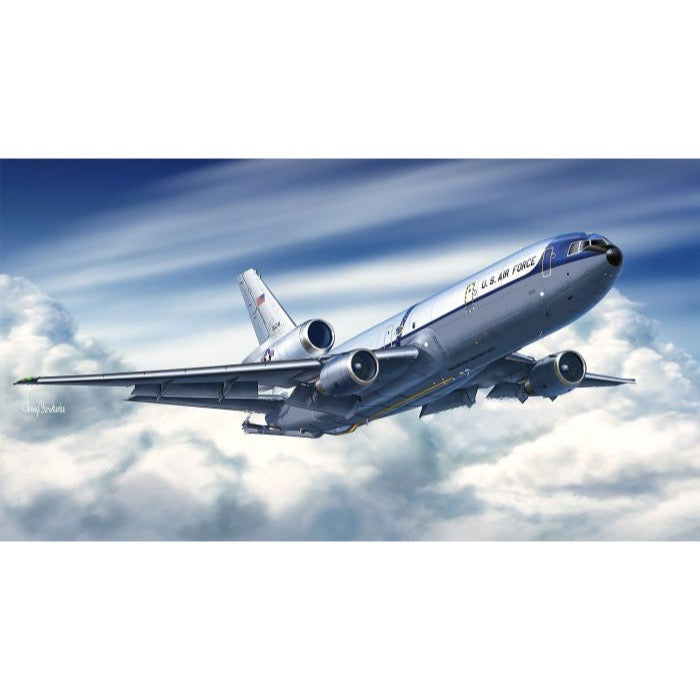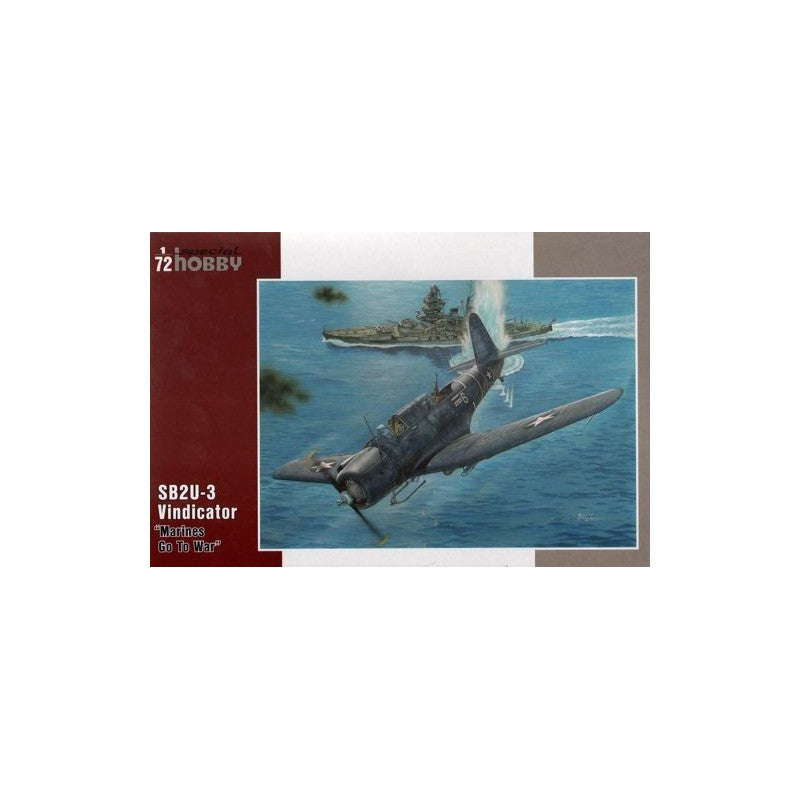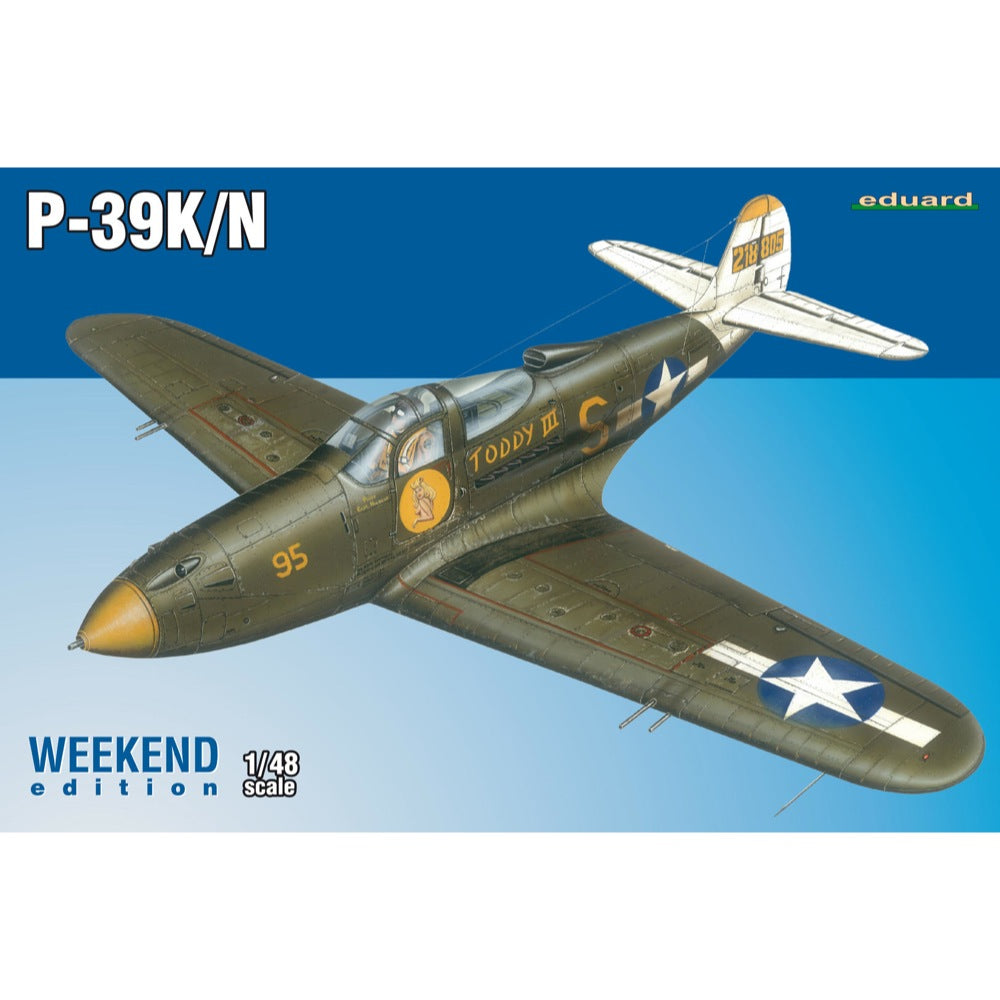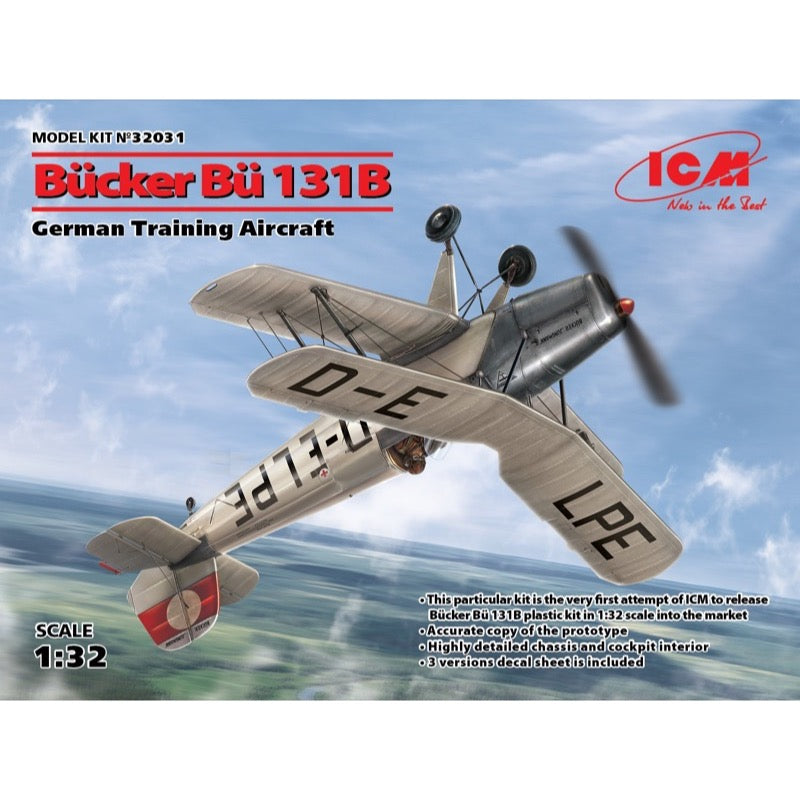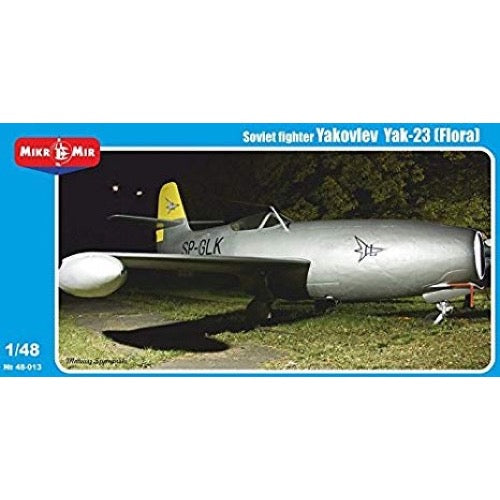
Mikro-Mir 1/48 Yakovlev Yak-23 Flora Soviet Fighter
25.00
$
<p>PlASTIC MODEL KIT SOVIET FIGHTER YAKOVLEV YAK-23 (FLORA) 1/48 scale plastic model kit MM48-013 Manufacturer: Micro-Mir Scale: 1/48 Material: Plastic Paint: Unpainted, Unassembled, Kit do not contain paints and glue. Condition: New in Box Combined model 1:48 Yakovlev Yak-23 (Flora) Micro Mir 48-013 The model has an excellent design, as well as detailing and designed for assembly by experienced modelers. Length of the model, mm: 168 Yak-23 (according to NATO classification: Flora, originally Type 28) is an early jet fighter Yakovlev OKB. I made the first flight in July 1947. Since 1949, 310 aircraft have been produced in the USSR. The kit includes: 120 plastic parts Decal photo etching Scheme for coloring the model Detailed instruction in English Adhesive, paint is not included in the kit</p>
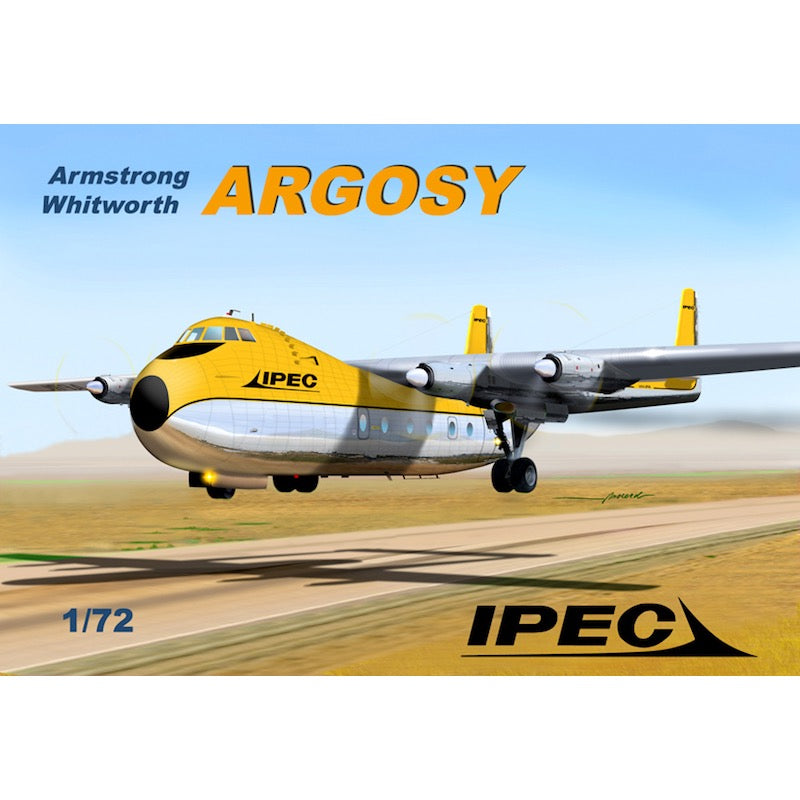
Mach 2 GP088 1/72 Armstrong-Whitworth Argosy IPEC Australia
50.00
$
<p>The Argosy AW series of aircraft was used by the Royal Air Force for its capability to accommodate 69 troops, 48 stretcher cases or 29,000 lb of freight. This meant it could carry military equipment such as the Saracen or Ferret armored cars, or artillery such as the 105mm howitzer or Wombat. In December 1970 the last Argosies were retired by the RAF in favor of the Lockheed Hercules. Argosy AW planes were also used by several nations’ airlines in the civil capacity.</p>

MACH2 1/72 de Havilland Comet 4C Dan-Air London
52.00
$
<p>Complete new mold</p>
<p>Comet is the world's first jet airplane manufactured by de Havilland in the UK.</p>
<p>The first flight was in 1949, two centrifugal engines of large diameter were embedded in the base of the main wing, ultra-duralumin thin walled monocoque structure aimed at weight reduction and smoothing of the epidermis This aircraft at that time was the most advanced aircraft It was able to fly at a cruising speed of 725 km / h over some Douglas DC - 7, and the first bogie type main wheel was equipped on all the large aircraft afterwards.</p>
<p>Comet 1 was delivered to British overseas airlines in January 1951, the high level of regular arrival and departure rate in the next year's commercial flight and the high comfort with less vibrations unlike reciprocating machines of piston engines, so in the first year only 3 Ten thousand people got popularity.</p>
<p>In August 1958, I also went regular service to long-distance routes such as Heathrow to Haneda via the South-way route.</p>
<p>After the power-up type comet 2 equipped with an axial flow type Rolls-Royce-Avon engine, we received orders from airlines operating long-distance international flights all over the world and 112 aircraft until the end of production in 1964 It was produced.</p>
<p>The accident rate of Comet 4 was lower than that of the competing aircraft that had been in service at the same time even after the end of production, operated by airlines around the world, until Comet 4 owned by British airline Dan Air reigned in 1982 It was used.</p>
<p>As the injection plastic kit of 1/72 for the first time, this kit has a total length of about 500 mm at completion and a total width of about 486 mm.</p>
<p>It is an essential kit for British machine fans.</p>
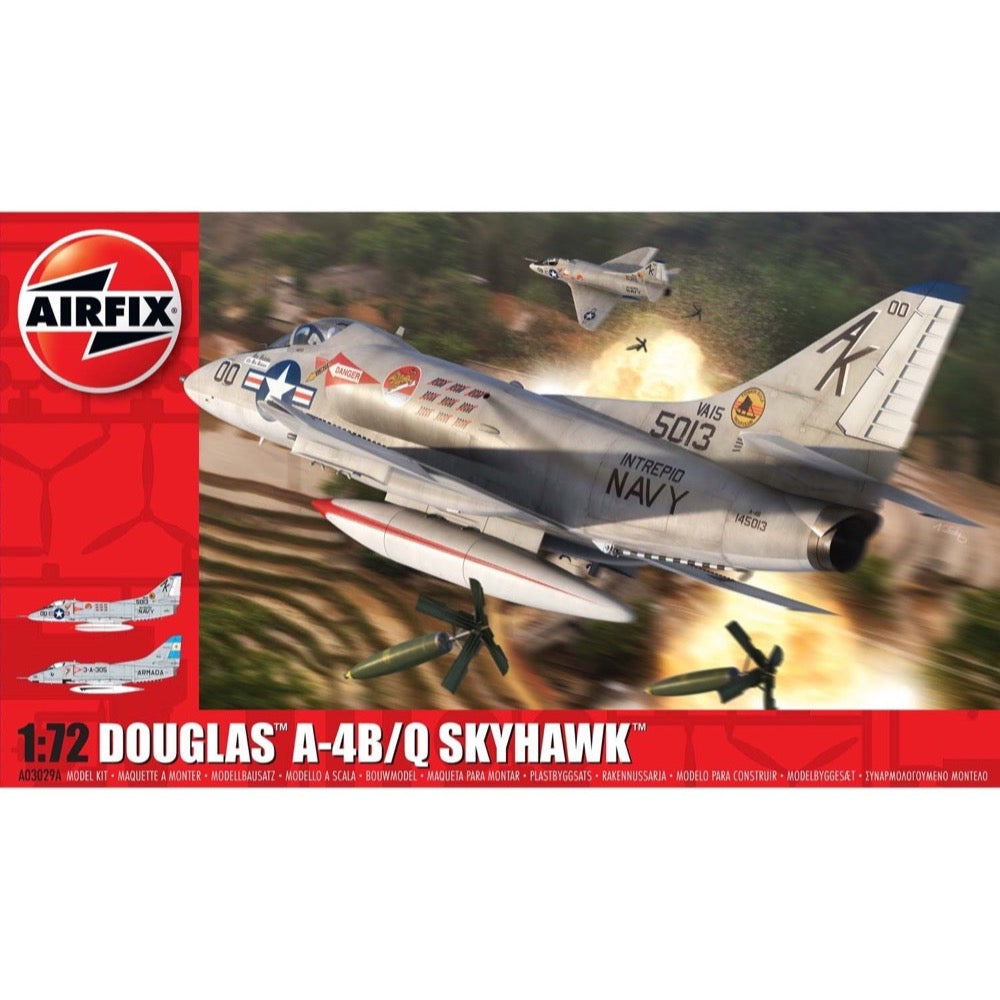
Airfix A03029A 1/72 Douglas A-4B/Q Skyhawk
16.00
$
<p>The A-4 Skyhawk is a carrier-capable ground-attack aircraft designed for the US Navy and Marine Corps. Skyhawks were the Navy's primary light bomber used over North Vietnam. The Argentine air force also used the type during the Falklands War in 1982. </p>
<p>From its multi-purpose design to extensive service during multiple wars, the Douglas A-4B/Q Skyhawk is as stylish as it is versatile, as replicated in the model exclusively from Airfix! With 2 livery schemes and a 116mm wingspan, this aircraft is a must-have for Airfix fanatics and model makers alike.</p>
<p>Boeing, Douglas, McDonnell Douglas, North American Aviation, A-4 Skyhawk, AH-64 Apache Longbow, B-17 Flying Fortress, B-25 Mitchell, C-47, DC-3, F-4 Phantom, P-51 Mustang their distinctive logos, product markings, and trade dress are all trademarks of The Boeing Company.</p>
<h4>Includes</h4>
<ul>
<li>Sprues</li>
<li>Decals</li>
</ul>
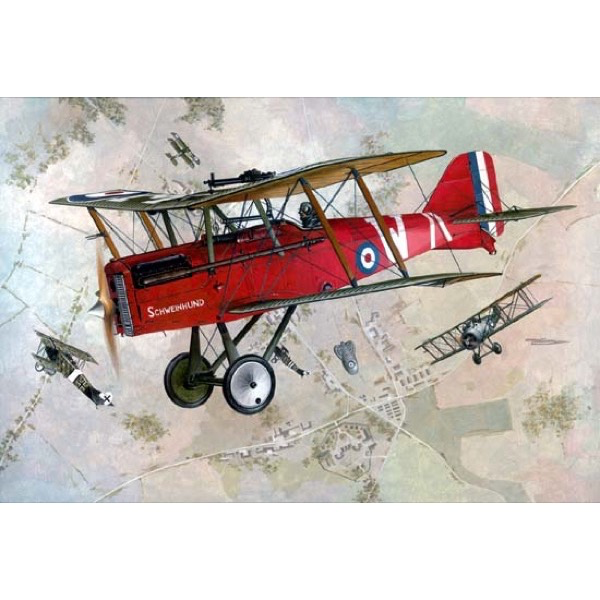
Roden 607 1/32 RAF SE5A with Wolseley Viper MT
35.00
$
<p>The history of the most successful British fighter of the First World War began in 1916, when the Royal Aircraft Factory's talented engineers, H.P. Folland and J. Kenworthy, decided to employ the new French 150 h.p. Hispano Suiza engine in a plane of new design. The first flight of the prototype RAF S.E.5 in the hands of test pilot F.W. Goodden took place towards the end of 1916, and in April 1917 the first machines were delivered to 56 Squadron of the Royal Flying Corps. Later the design was modified; it received the more powerful 200 h.p. Hispano Suiza engine and became the RAF S.E.5a.</p>
<br>
<p>The performance of the new fighter more than satisfied the military: the S.E.5a was to be very successful, however its mass production was continually affected by problems with the newly developed Hispano Suiza 200 h.p. engine. There were many difficulties involved in manufacturing it in sufficient quantity and, in addition, this engine was required by the French SPAD fighters.
In the United Kingdom the license for construction of the Hispano Suiza engine was acquired Wolseley Motors Ltd. An insignificant number of the S.E.5a had the Wolseley Adder engine which, actually, was a copy of the Hispano Suiza, but it too appeared unreliable. Wolseley Motors engineers were obliged to improve the basic Hispano Suiza design. Externally similar to its predecessor, the new engine was named the Wolseley Viper. The capacity of the engine remained constant, however now its running during flight was stable and reliable. So at last, at the end of 1917, the Royal Flying Corps had received the right machine to gain an advantage in the sky. The RAF S.E.5a with the Wolseley Viper engine differed somewhat from the earlier version, its radiator being noticeably more rectangular.</p>
<br>
<p>Flight characteristics of the S.E.5a with the Wolseley Viper engine also improved: both maximum speed and rate of climb. In maneuverability the S.E.5a did concede something to its nearest competitor, the Sopwith Camel; however, in other respects they were almost on equal terms. The plane began its operational service in Royal Flying Corps squadrons at the end of 1917, thus many RAF S.E.5a were produced with the Hispano Suiza engine and saw a lot of action before they received the new engine at major overhaul. By the middle of 1918 the S.E.5a was playing a significant role on the Western Front - 15 squadrons were armed with this fighter. Three more squadrons were at war on the Macedonian front, two in the Near East, and one in Mesopotamia. A quantity of S.E.5a were also transferred to Home Defence, where they served in 4 squadrons.
In very quick time the RAF S.E.5a gained a reputation it keeps to the present day. German pilots always took extra care before entering into a duel with it. Famous British Empire aces - Mick Mannock, James McCudden, Billy Bishop, Andrew Beauchamp-Proctor and many others - achieved plenty of victories piloting the S.E.5a.</p>
<br>
<p>Apart from the Royal Flying Corps, the RAF S.E.5a was delivered to the American forces which were at war on the Western Front. Some more machines were transferred to the British Dominions - Australia, Canada and the South African Union. During the Civil War in Russia in 1919-20, at least two S.E.5a came into the hands of the Bolsheviks and went to war with black stars on their fuselage and wings. After the termination of the Great War many S.E.5a found their way to the USA where they were operated right up to the mid 1920s. After being disarmed most English machines quickly went to the breaker's yard, but many American S.E.5a went into private hands and were used for a long time in postal service and for acrobatics. A lot of them had cinema careers, taking part in many Hollywood films (for example, Howard Hughes's epic film 'Hells Angels'). During the war and afterwards, a small quantity of S.E.5a were converted to two seaters for the training of future pilots. Overall, 5,205 planes - from the first S.E.5 up to the most successful S.E.5a with Wolseley Viper engine - were produced. Without any doubt, the RAF S.E.5a was, and is, deservedly prominent in the pages of the history of Twentieth Century aviation.</p>
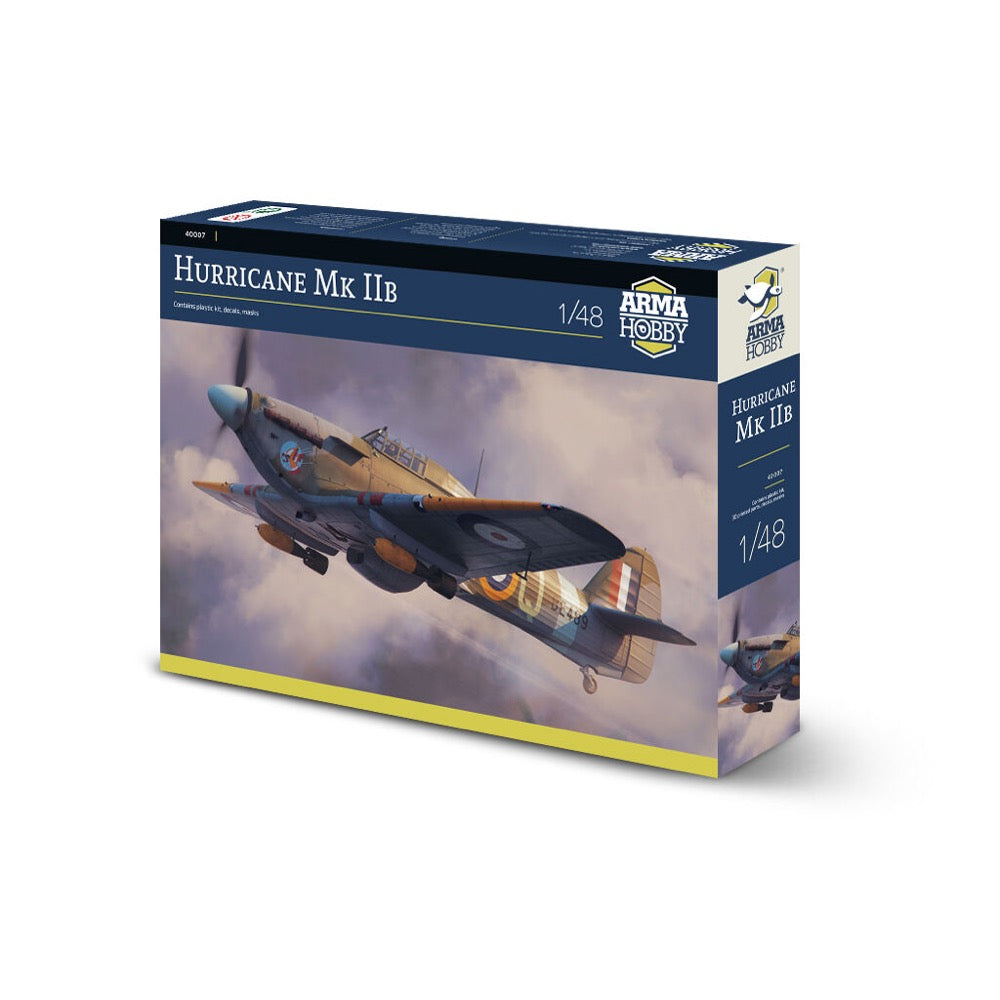
Arma Hobby 140007 /48 Hurricane Mk IIb
42.00
$
<p>Hawker Hurricane Mk.II is a development of the famous fighter designed by Sydney Camm. It was created by installing a more powerful Rolls-Royce Merlin XX engine equipped with a two-stage supercharger in a standard airframe. This solution significantly improved the aircraft's performance. The new version designated Hurricane Mk.IIa, with unchanged armament, was first flown on June 11, 1940, and in August of that year, the first units were put into service with RAF squadrons.</p>
<p>At that time, the Hawker company was researching improving armament. The thick wing allowed the use of cannons and machine guns in various configurations. Initially, a variant with 12 7.69 mm machine guns in the wings was introduced, under the designation Hurricane Mk IIb. Unfortunately, the small calibre of the weapon did not significantly change the effectiveness of fire, especially against armoured targets. Therefore, these machines were later widely used mainly for bombing under the name "Hurribomber". When the bombs were used, initially one gun was removed above each the bomb rack. Later, bomb racks were designed with a chute for empty casings, which made it possible to retain the full armament.</p>
<p>Over time, it turned out that the plane loaded with additional weapons, despite a more powerful engine, no longer met the requirements for modern fighters. Together with the cannon-armed Hurricane Mk IIc, these aircraft were used to attack ground targets with gunfire and bombing, among others in Operation "Jubilee" – Dieppe landing. Thanks to installing a tropical filter, the "Trop" version was also created, intended for operations in hot climates. Mk IIb and c aircraft equipped in this way took effective part in combat in Africa and the Far East. A naval version with a hook for landing on aircraft carriers was also created.</p>
<h3>The kit includes</h3>
<ul>
<li>Plastic parts (including new sprue for B version)<br>
</li>
<li>Decals (3 marking variants: RAF, RCAF and PAF)<br>
</li>
<li>Canopy and wheel masks</li>
</ul>
<h3>Marking options</h3>
<ul>
<li>Hurricane Mk IIb “Hurribomber”, BE489/AE-Q “Butch the Falcon”, No. 402 Squadron RCAF, Warmwell, February 1942<br>
</li>
<li>Hurricane Mk IIb Z3171/SW-P “Hyderabad City”, No. 253 Squadron RAF, Hibaldstow, pilot F/SGT. J.C. Tate, winter 1941/42<br>
</li>
<li>Hurricane Mk IIb, Z3675/WX-B, No. 302 Squadron PAF, Church Stanton, August 1941</li>
</ul>


